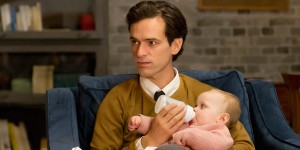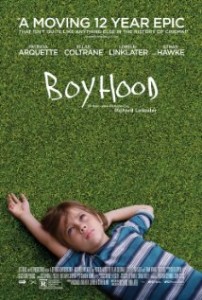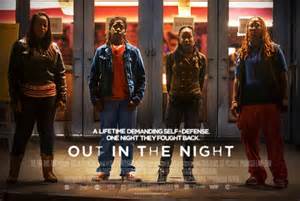 The man ahead of me in the line has just arrived from the Telluride Film Festival. While you wait to get into a film screening, you strike up all sorts of conversations. And this man gives me his opinion of what cinema will be celebrated at year’s end. BIRDMAN, the latest from Alejandro Gonzalez Inarritu is a wonder he says. Adding that it is about a filmmaker trying to take control of the world around him. That sounds a bit like Fellini’s 8 ½, I offer, and he says no, no BIRDMAN is far more serious than that. The entire film has been shot to simulate a single continuous take, so it gets high marks just for that he further explains. And Michael Keaton is Oscar bound he prognosticates. As is Steve Carrel, for FOXCATCHER he says, another film bound for Academy awards honors. The biggest disappointment for him has been WILD in which he complains that Reese Witherspoon is horribly miscast. I mention that I am part of that small minority that believes that Jean-Marc Vallee’s previous effort DALLAS BUYER’S CLUB was a terrible film. Then WILD is not going to change your mind about this director, he says. What was his best film he saw at Telluride, I ask? Oh, it’s the Argentine film WILD TALES he says with much excitement, and it is playing at Toronto and I must buy a ticket. And then we get into the cinema, leaving my head spinning. And that is the opinion of just one person at the festival. Throw together all the world’s cinephiles and you wouldn’t sleep for fear of missing an important film at the festival.
The man ahead of me in the line has just arrived from the Telluride Film Festival. While you wait to get into a film screening, you strike up all sorts of conversations. And this man gives me his opinion of what cinema will be celebrated at year’s end. BIRDMAN, the latest from Alejandro Gonzalez Inarritu is a wonder he says. Adding that it is about a filmmaker trying to take control of the world around him. That sounds a bit like Fellini’s 8 ½, I offer, and he says no, no BIRDMAN is far more serious than that. The entire film has been shot to simulate a single continuous take, so it gets high marks just for that he further explains. And Michael Keaton is Oscar bound he prognosticates. As is Steve Carrel, for FOXCATCHER he says, another film bound for Academy awards honors. The biggest disappointment for him has been WILD in which he complains that Reese Witherspoon is horribly miscast. I mention that I am part of that small minority that believes that Jean-Marc Vallee’s previous effort DALLAS BUYER’S CLUB was a terrible film. Then WILD is not going to change your mind about this director, he says. What was his best film he saw at Telluride, I ask? Oh, it’s the Argentine film WILD TALES he says with much excitement, and it is playing at Toronto and I must buy a ticket. And then we get into the cinema, leaving my head spinning. And that is the opinion of just one person at the festival. Throw together all the world’s cinephiles and you wouldn’t sleep for fear of missing an important film at the festival.

THE NEW GIRLFRIEND is the latest film from Francois Ozon. It wasn’t so long ago that Ozon was the reigning enfant terrible of French cinema, having helmed movies that gleefully crossed the line. But with wit that went beyond the shock value; SWIMMING POOL, WATER FALLING ON BURNING ROCKS, and CRIMINAL LOVERS were the films that put him on the map. Then he turned respectable with UNDER THE SUN, 8 WOMEN and POTICHE. How curious that in what seems like only a matter of years, Xavier Dolan (who is not even 25 years old) has taken over the enfant terrible title, bringing into question Ozon’s ability to still rock the boat by making films that simultaneously provoke and impress. THE NEW GIRLFRIEND is not going to change Ozon’s calling card, not least because this film has the unfortunate timing of coming out on the heels of the somewhat similarly themed LAURENCE ANYWAYS from Xavier Dolan last year. No matter how you cut it, Dolan’s a superior film.
With THE NEW GIRLFRIEND Ozon is clearly paying homage to the films of Douglas Sirk (with a dash of Almodovar, for good measure). So it is necessarily a melodrama, which is not a liability if handled well (Todd Haynes did an admirable job doing just that with FAR FROM HEAVEN). But THE NEW GIRLFRIEND, through most of its running time, feels like a helicopter trying to land in gusty winds; it keeps circling and circling, but is unable to settle on ground.
The film tells the story of Claire (Anais Demoustier) who is trying to shake off the sorrow following the death of her best friend Laura, who has also left behind a bereft husband David (Romain Duris) and infant child. Trying to deal with her grief and offer comfort to David, Claire walks into his home unannounced, to find him dressed in women’s clothing. David explains that he wants to be both father and mother to his child, and while Claire fails to understand this at first, she eventually becomes David’s accomplice in exploring his feminine sensibility. Much to the dismay of Claire’s husband who begins to suspect Claire’s time spent away from work. This can play as a light-hearted farce, as a serious look at the fluidity of sexuality and identity, or even as bitter satire of the overzealousness of political correctness in contemporary mores. But to play this material as a Douglas Sirk melodrama presents with inherent issues. For one thing Ozon over-commits to the Sirk sensibility to the extent that David’s home has furnishings reminiscent of sixties décor. It is difficult to shoehorn this visual palette into a story set in contemporary times without coming off jarringly anachronistic. And what should have been frothy and giddy comes off labored, and worse, dated. The film suffers as a whole from seeming like something that was made at least a couple of decades ago, not least from the way certain characters react to situations. I wish that Ozon’s desire to do Sirk had led to him setting this story in the sixties, which would make the look, and more critically, the behavior of the characters in this story a lot more believable.

TOKYO FIANCEE is first-time director Stefan Liberski contribution to all the stories in all the films about star-crossed lovers. It is based on a popular European novel by Amelie Nothomb about a French-speaking Belgian girl (Pauline Etienne) obsessed with Japan who happens to go to Japan and fall in love with a local Japanese boy (Taichi Inoue) who is obsessed with France. There have been many films about this sort of cultural dislocation. In particular such films that are also wittingly or otherwise romantic, tend to have a way of getting twee. TOKYO FIANCEE is very much a film about cultural dislocation, but it keeps the whimsy somewhat in check, doling out only homeopathic doses of it, for the most part. These are individuals you enjoy spending time with, even as you wonder why your own life did not come pre-filled with this sort of charm offensive. Heck, the lead is even named Amelie which should remind of you a certain Audrey Tatou confection that is much beloved but extra-frosted all the same. While the film spends the first half by playing with the mores of this sort of cinema (honest, if a little indulgent look, at the fish out of water), the latter part of the movie ultimately finds a defiantly unique voice. About being dispossessed in youth, and trying to locate a sense of self in a scary uncontrollable world.
Films like this live or die by their lead actors. Who have to carry the entire film, convincing every audience member that their company is worth having. And this film is worth watching, and you must do so, for Pauline Etienne. Looking uncannily like a young(er) Carey Mulligan, Etienne grounds the film with an openness that is disarming. Even when the plot calls on her to be charming beyond reason, she makes us believe that this person would indeed have this effect on these other individuals. Fragile, irrational, lost, impetuous, and searching, Etienne’s Amelie seems to convey these all with enviable flair. Even in the Q&A session after the end of the film, Etienne came across as effortlessly disarming. Discover this actor before the world catches up to her wonders. I cannot wait to see what she does next.

CART is a South Korean film loosely based on true events in which female workers at a supermarket who were abruptly notified of being laid off prior to the expiration of their contracts went on a strike to protest. What initially started as a frightening but also empowering stance to take on the system, eventually led to grave and worsening outcomes. What starts out seeming like a feel-good David vs. Goliath tale descends into a reckoning with reality in which corporations almost always prevail over workers. There is no doubt this film has a sincere focus, and it spends a fair bit of time investing in the individual lives of several of the key characters, if only to make clear the cascaded effect of social injustice on those beyond the direct victims. All of which is almost undone by a shrill background score that cues up every scene with the exact sentiment that the audience member is supposed to be filming. This very nearly destroys the film, but unlike say the nakedly melodramatic MARY KOM, this film makes it clear that hope may be the most elusive currency when a group of individuals decide to take on those who control them. This is an angry film, and necessarily so. And it is acted with honest conviction by a group of persuasive screen presences. Even with its flaws, including an over-eagerness to elicit sympathy, the cinema of the disenfranchised is essential. And CART is a good entry in this genre.










